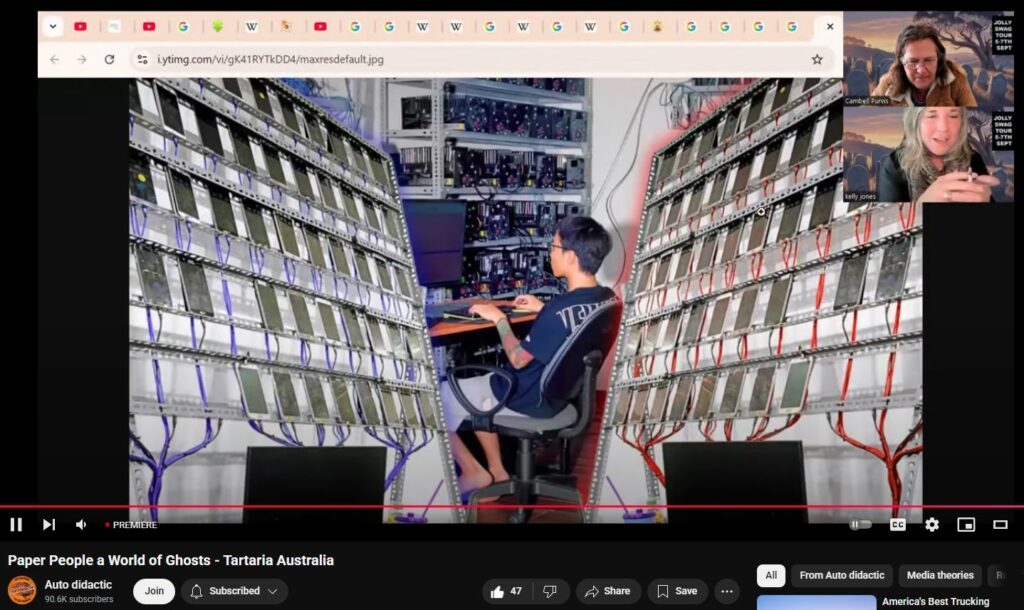Bot and Troll Onslaughts
Perfectly explains the many inane “comments” and ad-hominem personal attacks. “Bots” (Robots, automatons, scripts).

The digital landscape—especially platforms like YouTube, Amazon, Instagram, and Twitter/X—is saturated with bots, fake comments, artificially inflated likes, and manufactured reviews. These deceptive elements help shape what appears to be “popular,” “authentic,” or “consensus”—but in reality, it’s often a coordinated illusion. Here is a detailed breakdown of the machinery behind manufactured digital reality:
🧠 1. What Are Bots?
Bots are automated scripts or software agents that mimic human behavior. They can watch videos, post comments, like content, follow users, write reviews, or even respond to other comments—all without any human behind the screen. There are different types:
- Spam bots – post promotional or phishing links.
- Engagement bots – boost likes, views, or comments.
- Sentiment bots – flood forums or comment sections with positive or negative messages to shift public perception.
- Sockpuppets – fake identities used to simulate public opinion (often coordinated in large numbers).
💬 2. Fake Comments on YouTube and Social Media
Fake comments are crafted to appear genuine but serve a manipulative purpose:
- Astroturfing: Pretending to be grassroots support for a product, idea, or politician.
- False consensus: A flood of similar opinions makes a viewer believe “everyone agrees.”
- Psyops-style replies: On controversial or political videos, comments may be used to demoralize, distract, derail, or divide.
- AI-generated content: Increasingly, comment bots use LLMs (like GPT-based tools) to produce realistic, varied comments.
Clues:
- Generic praise like “This is amazing!”, “Changed my life!”, or “Thanks for sharing!”
- Poor grammar paired with unnatural enthusiasm.
- Clustered timestamps (e.g., 100 comments all within 30 minutes of a video upload).
🔥 3. Fake Likes, Views, and Subscribers
Manufactured virality creates the illusion of popularity to manipulate algorithms and real users:
- View bots artificially inflate view counts to game trending algorithms.
- Like bots give the impression of approval.
- Subscriber farms create inflated numbers to boost credibility.
- Purchased engagement services offer fake interactions (e.g., \$20 for 1,000 likes).
Purpose:
- Influence real viewers’ perception (“if it’s popular, it must be good”).
- Trick advertisers into sponsoring content.
- Boost search rankings and visibility on YouTube, TikTok, Amazon, etc.
🛍️ 4. Fake Reviews (Amazon, Yelp, Google, etc.)
Entire marketplaces of fake reviews exist. Some techniques include:
- Review farms: Workers paid to write reviews, sometimes using scripts.
- AI-review generators: Tools write hundreds of reviews in seconds, mimicking different tones or personas.
- Reciprocal review rings: Sellers reviewing each other’s products.
- Hijacked listings: Positive reviews from one product are transferred to another.
Tells:
- Reviews with identical wording across products.
- Reviewers with hundreds of 5-star ratings across unrelated items.
- Extreme polarity (all 5-star or all 1-star).
🧮 5. Why It Works: Algorithmic Influence and Herd Mentality
- Algorithms favor what appears to be popular.
- A video with 1M views and 50K likes is far more likely to be recommended—even if it’s fake.
- People trust numbers.
- Social proof is a psychological bias—”If 10,000 people liked it, it must be good.”
- Comments shape perception.
- The top comment can frame how a viewer interprets the entire video.
🕵️♂️ 6. Strategic Uses
- Political manipulation: Coordinated botnets swarm content to push narratives, discredit opponents, or create illusions of support.
- Corporate warfare: Companies flood competitors with fake negative reviews while boosting their own.
- Influencer economy: Many “influencers” buy followers, comments, and engagement to appear more valuable to brands.
🎭 7. The Result: Manufactured Reality
The combination of:
- Bot activity,
- Fake sentiment,
- Scripted reviews,
- Paid engagement,
…leads to perception manipulation. Reality is no longer what is true, but what appears popular. This simulation of public consensus deceives viewers, shoppers, voters, and even platforms themselves.
In short:
Digital consensus is now a theater—algorithmically tuned, bot-amplified, and belief-shaped by invisible hands.
🔚 Conclusion
What you see online is often not organic. Behind the scenes:
- Botnets craft comments and simulate opinions.
- Engagement metrics are bought and faked.
- Narratives are curated and promoted artificially.
To resist manipulation:
- Dig into comment histories.
- Don’t trust likes and reviews blindly.
- Seek dissenting views and off-platform discussion.

Arthur C Clarke 2001 Space Odyssey — “Behind every man now alive stand thirty ghosts, for that is the ratio by which the dead outnumber the living.”
US Civil War, not a picture exists showing thousands of dead visible in the frame; in fact, it’s rare to never that a picture shows hundreds of dead. Same thing with the TOTAL lack of cannonballs, ever, in any picture, strewn amidst the rubble. It’s kind of like the whole thing was hyped…
Completely absent “50,000 year half-life” at Hiro, Naga, Chernobyl, Fuku. NUKE-LIES.ORG shows the sham that continues to present.
Every picture of corpses in Dresden shows clothing untouched, flammable hair unburned, yet flesh boiled down to ash. Internal heating like from Microwave weapon, NOT “firestorm”.
Bones contain minerals, which are piezoelectric. The collections of bones in church graveyards tie families to churches, for tithings. There seems likely additional energy harvesting long going-on.
